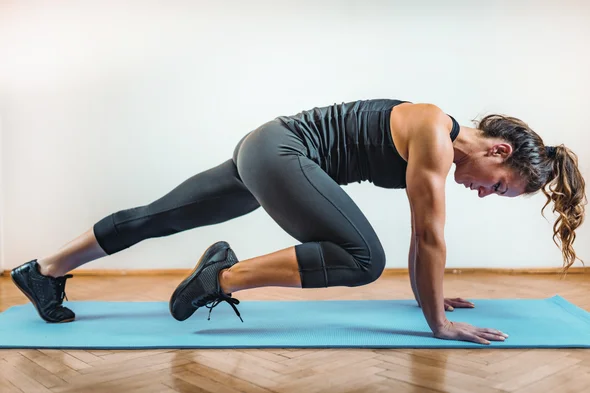Your Introductory Guide to High Intensity Interval Training Greetings, Fitness Warriors! Today, we’re diving into the dynamic universe of Pilates, an exercise system that underscores control, equilibrium, strength, and flexibility. Despite its longstanding presence, Pilates is increasingly earning acclaim as a valuable practice for athletes spanning various disciplines. This article will expound on why Pilates is a remarkable adjunct to any athlete’s training regimen and offer a detailed guide on getting started.
Why Pilates is a Sportsman’s Best Friend?
Pilates is not merely another workout; it’s an all-encompassing ethos of physical fitness and body cognizance. But why should athletes contemplate assimilating Pilates into their training schedule?
Holistic Strength: Unlike certain exercise routines that focus on specific muscle clusters, Pilates adopts a more comprehensive strategy. It indeed targets the core, but also encompasses the entire body, facilitating balanced muscle growth across the board. Injury Prevention: By enhancing flexibility, joint mobility, and body awareness, Pilates can aid athletes in diminishing the likelihood of injuries, which might transpire due to stiff muscles or clumsy, unregulated movements. Performance Boost: A robust core, enhanced flexibility, improved balance, and heightened body consciousness can notably augment athletic performance, whether that translates to sprinting faster, jumping higher, or amping up agility on the sports field. Embarking on Your Pilates Voyage: Initial Steps
Raring to test the Pilates waters? Here’s a step-by-step guide to kick-start your Pilates adventure:
Seek a Qualified Instructor: Pilates exercises necessitate meticulous control and form. A certified instructor can steer you through the movements, guarantee your alignment is accurate, and assist you in adapting exercises according to your fitness level. Begin with Basic Routines: Pilates showcases a range of beginner-friendly exercises that acquaint you with its fundamental principles. Exercises such as ‘The Hundred’, ‘The Bridge’, and ‘The Spine Stretch’ serve as excellent entry points. Consistent Practice: Regularity is paramount with Pilates. Routine practice – even just a few sessions per week – can culminate in noticeable enhancements in strength, flexibility, and body cognizance. A Closer Examination of Pilates Exercises for Athletes
Let’s probe a tad deeper into some Pilates exercises that are particularly advantageous for athletes:
The Hundred: A core-based exercise, The Hundred activates your abdominal muscles while simultaneously instilling the rhythmic breathing central to Pilates. The Bridge: This routine targets your glutes and hamstrings, vital muscles for any sport involving running or jumping. Additionally, it advocates spinal articulation, fostering spinal flexibility. The Plank: A regular feature in many workout routines, the Pilates iteration of the plank underscores alignment, control, and maintaining steady respiration. The Swan: This is an exceptional exercise for athletes as it helps counterbalance the forward posture that many sports cultivate. The Swan fortifies the back extensors, the muscles responsible for keeping us upright. Leg Circles: This Pilates routine aids in enhancing hip mobility, crucial for athletes engaged in sports necessitating running, pivoting, or swiftly changing directions. In summation, Pilates offers an outstanding counterpoint to traditional athletic training. It encourages slower, more controlled movements that can foster body cognizance, uplift performance, and decrease the risk of injury.
And as always, Fitness Warriors, remember, the journey to physical fitness isn’t solely about lifting heavier weights or achieving faster times. It’s also about comprehending your body, refining your control, and preserving equilibrium in your training regimen. With Pilates, you can accomplish these objectives and become not just a better athlete, but a healthier you.


